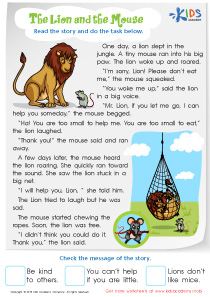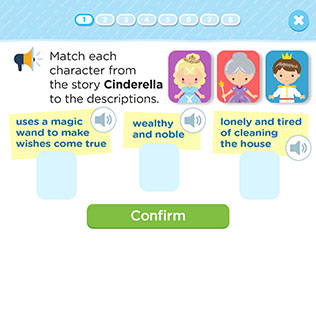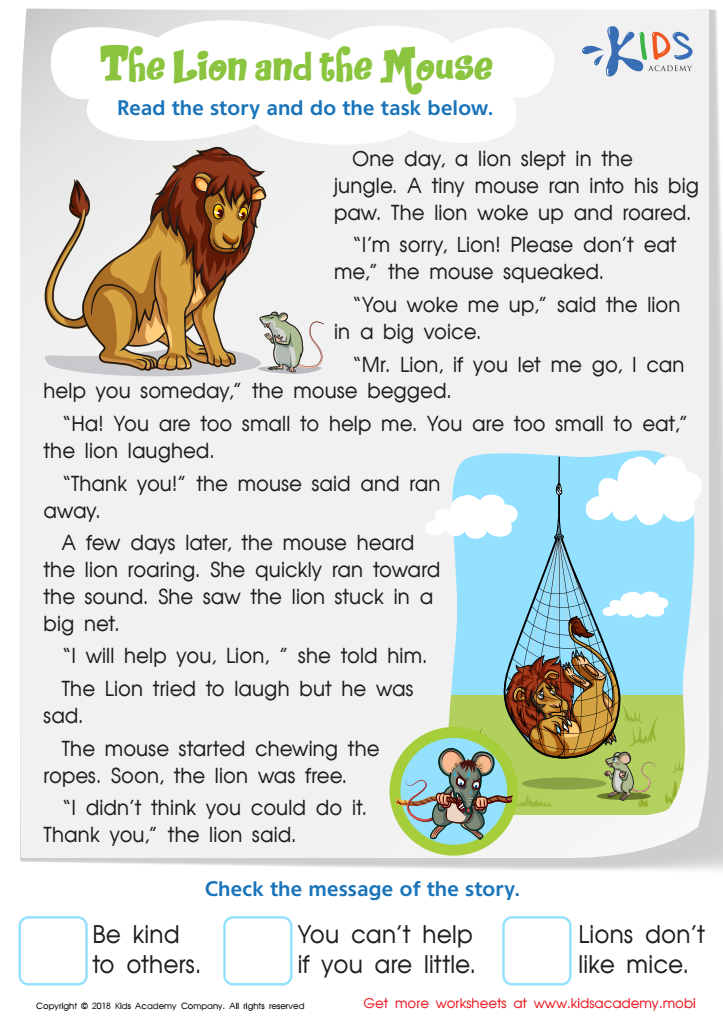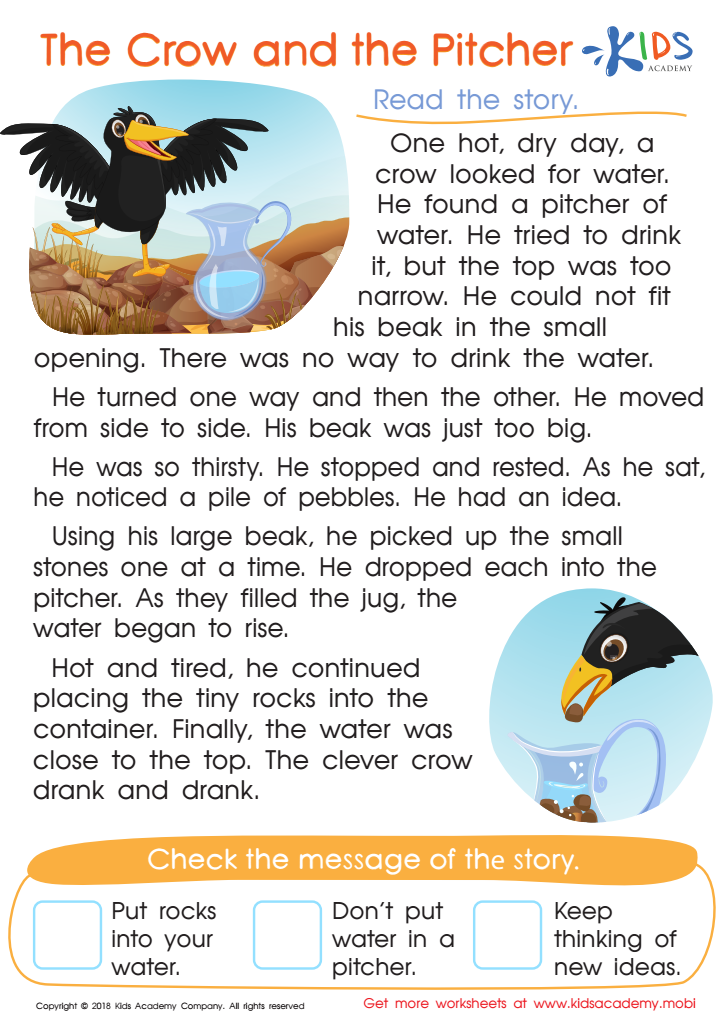Lessons in Fables and Folktales - Lesson for Grade 2, Chapter - Key Ideas and Details/ Craft and Structure
In the "Lessons in Fables and Folktales" unit, second-grade students will embark on an enchanting journey through the world of fables and folktales, unlocking the doors to timeless wisdom and moral lessons. Through engaging activities such as "The Lion and the Mouse Worksheet" and "The Crow and the Pitcher Worksheet," students will explore the key ideas, details, and structures that make these stories both captivating and instructive.
By delving into these classic tales, students will learn to identify the central messages and moral lessons that fables and folktales are renowned for conveying. This understanding is crucial as it not only enhances their analytical skills but also instills valuable life lessons on kindness, perseverance, and the importance of wit and intelligence. Furthermore, the "Key Details and Central Message in Folktales" activity will sharpen their ability to recognize and articulate the main ideas and themes in literature, a foundational skill in reading comprehension and critical thinking.
This lesson is vital for second graders as it nurtures their appreciation for storytelling and its role in cultural history, while simultaneously developing their reading, comprehension, and analytical skills.



-
Activity 1 / The Lion and the Mouse Worksheet
Writer’s often have a message or theme in their stories. Determining the message or theme is challenging in many cased because it is often not stated in the story-it is implied. Read the story from this worksheet about The Lion and the Mouse. Students then think about what the characters say and do to figure out the message in the story. This printable is a great practice resource for discovering the message of a text.
-
Activity 2 / The Crow and the Pitcher Worksheet
All stories have a lesson or message to share, and this is usually known as the theme. Check your child’s reading comprehension and give your child a purpose for reading with this fascinating worksheet from Kids Academy! Featuring a well-loved tale from Aesop’s fables, your child will enjoy reading about the thirsty crow who famously solved his problem by filling a pitcher with rocks to make the water rise. Simply read the story together with your child and determine which message on the bottom of the page is the central theme of the passage.
-
Activity 3 / Key Details and Central Message in Folktales - Quiz
In this assessment, students will identify key details and determine the central message in familiar stories and folktales.


